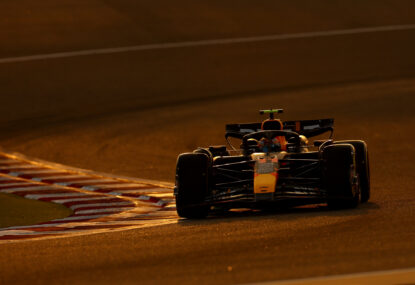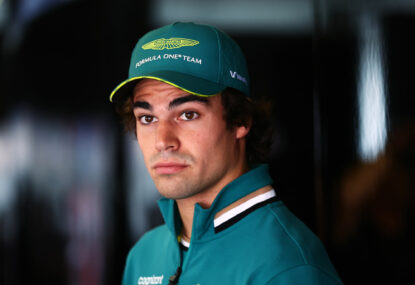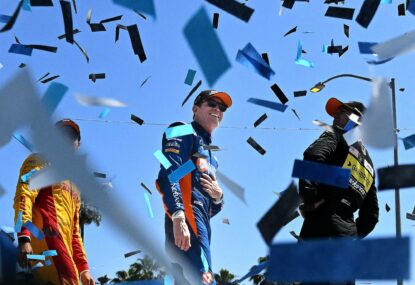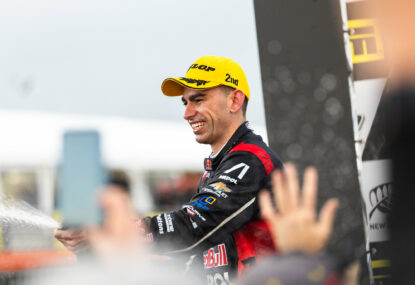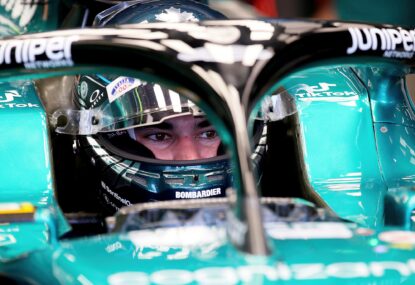As the F1 paddock headed to Silverstone in July 1999, it looked as if the title fight was once again going to be between Mika Hakkinen and Michael Schumacher.
However, 30 seconds into the British Grand Prix, the season would be turned on its head. The brakes on Schumacher’s Ferrari failed and the German went straight on at Stowe Corner. With speeds reaching around 305 kilometres an hour on the Hanger Straight and the car not decelerating that much over the gravel, it was a hard impact into the tyre barriers.
Schumacher had to be lifted out of the car as he couldn’t get out himself, and was airlifted to hospital, where it was confirmed that he had a broken right leg. He would be out for at least six weeks.
The hope was that Schumacher would make his return in front of the tifosi at Monza but he wouldn’t be back in his Ferrari until the penultimate round of the season in Malaysia.
The British Grand Prix carried on regardless and it was a fight between Eddie Irvine and David Coulthard for the win. Irvine now carried Ferrari’s championship hopes.
Irvine had led in the early stages of the race but Coulthard made the undercut work, taking the lead after the pit stops.
Meanwhile, Mika Hakkinen’s race wasn’t going well at all. As the Finn exited Luffield, his left rear tyre came clean off his McLaren. The team decided a few laps afterwards that it was too dangerous for Hakkinen to carry on and he was retired from the race.
Coulthard did improve McLaren’s day by taking the win with fellow countryman, Eddie Irvine, coming home in second. Ralf Schumacher completed the podium in his Williams.
Damon Hill finished fifth, a fortnight after threatening to retire immediately after the French Grand Prix. Hill was a happier man at Silverstone and he would complete the rest of the 1999 season.
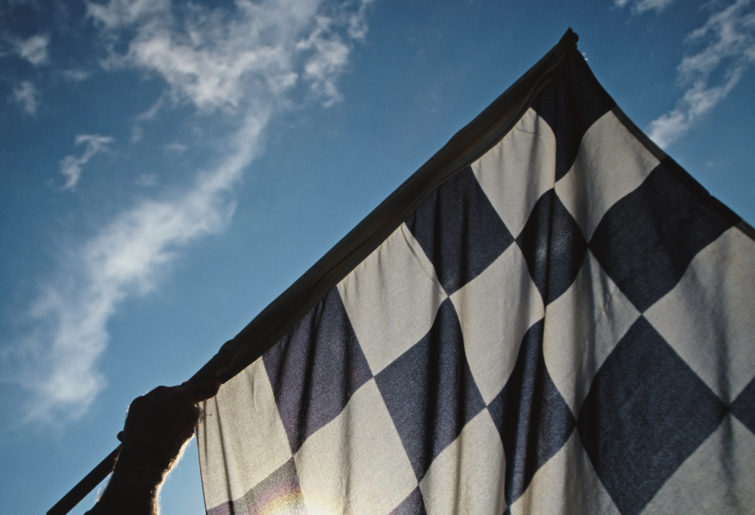
(Photo by Darren Heath/Getty Images)
Irvine and Coulthard were fighting it out for the win again at the next round in Austria. Hakkinen would have been more involved in this fight had he not been spun around by Coulthard at Turn 2 on the first lap. Hakkinen finished third, having made up 19 places after being last at the end of lap 1.
Coulthard led up until he made his pit stop. Irvine took the lead and held onto it after he had made his pit stop, coming out just ahead of Coulthard. Despite Coulthard’s best efforts, Irvine held on for the win by 0.3 seconds.
After closing the gap in the championship to Hakkinen in Austria, Irvine took the championship lead from the Finn in Germany. His victory coupled with Mika Hakkinen’s crash gave him an eight-point lead.
Things were already not going well for McLaren. When Hakkinen came into the pits, there was a problem with his refuelling rig, so the team had to use the rig normally used for Coulthard instead. Meanwhile, Coulthard had been awarded a ten-second stop-go penalty for cutting the Ostkurve chicane when overtaking Olivier Panis. He only finished fifth.
Roles were reversed at the next round in Hungary. Hakkinen comfortably won the race with Coulthard coming home in second. Irvine finished third but would have stayed in front of Coulthard had he not run off the track at Turn 7.
Another McLaren 1-2 came at Spa. This time though it was Coulthard who stood on the top step of the podium.
Hakkinen had started on pole once again but Coulthard got a better start. Hakkinen couldn’t fight back on the inside through La Source and Coulthard was able to stay ahead.
From there on in, Coulthard had a comfortable lead and won the race by over ten seconds.
After the race, Hakkinen revealed that he didn’t see the point in staying too close to Coulthard as this would lead to problems with overheating. Meanwhile, Coulthard felt the need to explain that he had the line for the first corner. No team orders were applied by McLaren at any stage of the race.
Another pole for Hakkinen in Monza didn’t translate to a race win. Instead, the Finn was bawling his eyes out in the trees at the side of the circuit, having spun out of the race at the first chicane.
Heinz-Harald Frentzen took his second win of the season – and the last win of his career. Another example of how you can get good results if you’re in the right place at the right time.
Heading into the European Grand Prix at the Nürburgring, Hakkinen and Irvine were level on 60 points each. This race is considered to be one of the greatest F1 races of all time.
As the rain started to fall, stuff started to hit the fan.
First, Ferrari botched Irvine’s pit stop as they didn’t have the correct tyres ready for him. Then, Frentzen retired from the lead, having forgotten to disable his Jordan’s anti-stall system.
The real reason for Frentzen’s retirement has only just been revealed. For the past 20 years, it has been disguised as an electrical issue.
Coulthard was the next man to go out of the race after skating off the road, across the gravel trap and into the barriers.
Giancarlo Fisichella now found himself in the lead. But Fisichella made one mistake too many and spun at the chicane at Turns 11 and 12.
Ralf Schumacher was now leading but a right-rear puncture ended his chances of victory.
Johnny Herbert then became the third different leader of the race in as many laps. He had started in 14th and managed to survive all the chaos to take Stewart Grand Prix’s only victory in F1.
Hakkinen’s fifth-place finish later proved to be crucial in the world championship. He won the championship by two points – the same number of points he scored in this European Grand Prix.
With the European season done and dusted, F1 made its first ever trip to Malaysia and the newly constructed Sepang International Circuit.
This was the first track designed by Hermann Tilke, who went on to design all the new grand prix tracks of the 2000s and 2010s.
The Malaysian Grand Prix also saw the return of Michael Schumacher. He made his return in style, taking pole by nearly a second over his teammate Irvine.
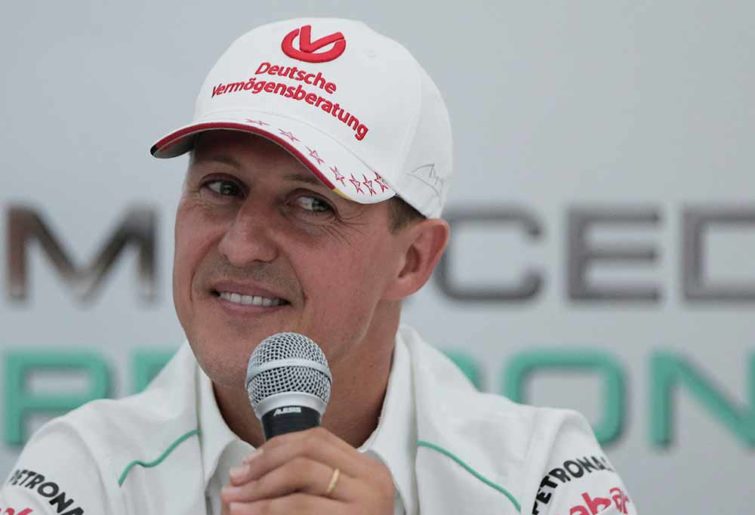
(AP Photo/Itsuo Inouye, file)
Schumacher was not here to win, though. He had promised beforehand that he would do everything possible to help Irvine win the world championship.
This was a job that Schumacher fulfilled brilliantly. He let Irvine through into the lead and kept Hakkinen behind him.
With Irvine taking the victory and Hakkinen finishing third, Irvine had the championship lead heading into the final round of the season in Japan.
That was until the FIA deemed the Ferraris to be illegal due to undersized deflector plates and excluded them from the race. However, Ferrari appealed and were successful. The results were reinstated, and the championship fight was back on.
Irvine’s accident in qualifying at Suzuka meant that Hakkinen had the upper hand going into the race. The Finn started in second while Irvine was fifth.
Despite Schumacher’s best efforts to cut across the track to block Hakkinen off the start, the McLaren was able to lead into Turn 1. Irvine was fourth at the end of the first lap.
Hakkinen had the race under control and there was little Irvine could do. Hakkinen took the chequered flag with Irvine finishing over a minute and a half behind in third.
Hakkinen was the 1999 world champion, taking his second championship in succession. Ferrari were able to take the constructors’ championship though – the Scuderia’s first since 1983.

































































































